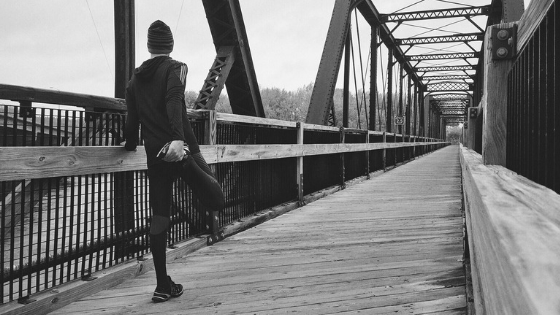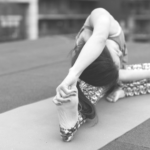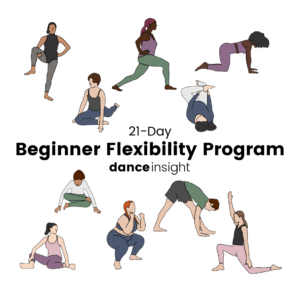
Dance Injuries: Making the Most of Your Down Time
I know… you don’t even want to think about it. It’s a dancer’s worst nightmare: getting injured. Especially to the point where you need to modify or sit out of class. Or miss out on a performance. *Shudder* I feel like I’m jinxing myself just saying the words.
Injuries are scary. But they’re a real thing that all dancers will experience, and we need to talk about it.
Let’s be real. Sometimes you DO have to dance on an injury.
The doctors will always tell you not to dance on it, of course. But if you can walk, you’ll probably be tempted to dance through the pain. Let me be clear: most of the time, dancing through the pain is a bad idea. However, there are circumstances where you might want to make an exception.
- If you’re in the middle of a performance and you can fake it till the end.
- If the show is tomorrow, you’re a soloist, and you don’t have an understudy.
- If dancing is your job, and not performing means no paycheck.
But here are some times when you might feel like you have to dance on an injury, but you really don’t.
- If you’re in the middle of a performance and you can’t fake it, or you feel like your safety is at stake. (For example, if you’re about to pass out, get the heck off that stage.)
- When you’re teaching, and the students “need” you to demonstrate. (@me) (They don’t.)
- If the show is tomorrow and you’re not a soloist. (Ensemble reblocks are easy enough to do at the last minute.)
- If dancing is your job, but your employer allows you to be on “light duty” and still get paid while you heal.
- If you’re at an intensive that you and/or your parents paid a lot of money for, and you want to make the most of the experience. (You don’t want that money to go towards ending your career.)
- When you have a big audition coming up. (Unless it’s literally once-in-a-lifetime, sit it out. You’re not going to be at your best when injured anyway.)
- When anyone or anything other than your own intuition tells you you’re fine to dance. No one else is in your body, feeling what you’re feeling. Trust your instincts.
But don’t be a hero.
If at all possible, sit out until you’re fully healed. What your teachers say is true: you don’t want to sacrifice your whole career for one performance.
Yes, that can really happen. Maybe not quite so dramatically, but dancing on an injury before it’s healed can cause a lot of harm. You could get re-injured, and possibly end up in a cycle of constantly re-injuring and re-healing the same part of your body. Compensating for the injury could cause undue strain somewhere else. Overworking the injury could significantly increase healing time, or it may never fully heal.
Have you ever heard people say, “I injured [body part] once, and it’s never been the same since?” If you haven’t, trust me, it’s a thing. Especially as you get older. (And by “older” I mean like 22.) Obviously you don’t want that. You want to give your injury the best possible chance of returning completely to normal.
So if your paycheck isn’t at stake, and the show can still go on, do your body a favor and sit out until your injury is fully healed!
How to make the most of your down time
I’m going to share the best advice I’ve ever heard about how to deal with dance injuries. It’s from Otto Vasquez, a hip hop teacher I met at the American Dance Festival. His advice was simple:
When one part of your body is injured, use your down time to work on a different part.
When he injured his ankle, he told us, he used that time to learn how to do isolations with his arms and upper body. And boy was he good at isolations. Oh my goodness. Like, mesmerizing, crazy good. It’s what he’s known for now. All because he spent hours practicing in front of a mirror while his lower body was out of commission.
So now I have a question for you.
What do you want to work on that doesn’t involve your whole body? What can you learn, strengthen, practice while letting an injured part of you heal?
I can think of a few answers myself:
- Strengthen my core
- Find more confidence in improvisation (limitations can be a good prompt for creativity!)
- Increase upper body strength
- Practice isolations, learn to be expressive with micro-movements
Sure, there’s a lot I’d love to work on that does involve my whole body. (Fouettés, anyone?) But suppose I find myself with a serious ankle injury. Wouldn’t I love to come back six weeks later, ankle healed, and suddenly having the arm strength to do a chaturanga? Absolutely.
Do Your PT
If you went to a doctor or physical therapist about your injury (as you should, if you can afford it!), they probably gave you some exercises to help your injury heal. Do them.
PT exercises are proven to help you heal, rebuild strength, increase mobility, or whatever your body needs. If you’re not doing what your doctor or physical therapist recommended, you can’t really complain if your healing takes longer than expected!
I know it can be hard to trust that it’s working. PT exercises might feel too easy when you’re used to burning muscles and excruciating stetches from dance class. 20 minutes of ice might not feel like enough time. Painkillers might feel unnecessary. But trust your doctors. They studied long and hard to be able to give you this advice. Obviously, if you really feel like something’s not working or it’s making things worse, you should stop doing that thing and ask about an alternative. For the most part, though, I encourage you to trust the medical professionals.
Remember to care for your mental health, too.
Sitting out from dance can be maddening. I know, I’ve been there. You might feel anxious about the long-term implications of your injury, worry about falling behind your peers, feel guilty that your teammates have to reblock all their dances, experience fear around the step or situation that got you injured, or any number of other bad feelings.
While you’re recovering from your injury, it’s important to watch out for your mental health as much as your physical health. It’s perfectly normal to experience a gamut of emotions throughout the process. All of your feelings are valid and justified, even if it doesn’t seem like how you “should” feel. Give yourself time to work through the mental recovery as well as the physical.
Listen to what your mind needs as much as you listen to what your body needs. You might feel like you should still go to class every week to sit out and watch, but if sitting on the sidelines is messing with your head and making you feel terrible, there’s no shame in just being absent.
Another important thing to remember is that some people just won’t understand what you’re going through. They may think they’re being sympathetic, when really their words are hurtful. You are under no obligation to hang out with people who make you feel worse when you’re recovering from an injury. Hang out with people who make you feel encouraged, hopeful, and loved. (That goes for all seasons of life, really!)
You can sit out of dance for mental health reasons, too.
It’s worth noting that being in a bad place mentally can prevent you from dancing as much as physical injury. I know a lot of people use dancing as an emotional release and form of expression that helps with their mental health, but it’s okay if that’s not the case for you.
I sat out of a drop-in class once because I was feeling anxious and overstimulated, and the thought of going across the floor and being seen was just too much at the moment. I told my friends I wasn’t feeling well and just watched them take class. And it was fine!
Sitting out to take care of your mental health is not being lazy. Remember that your brain is part of your dancing body just as much as your feet.
Whatever has you out of dance at the moment, remember that everything is temporary. You will recover, and you will be stronger because of this experience. I believe in you!







